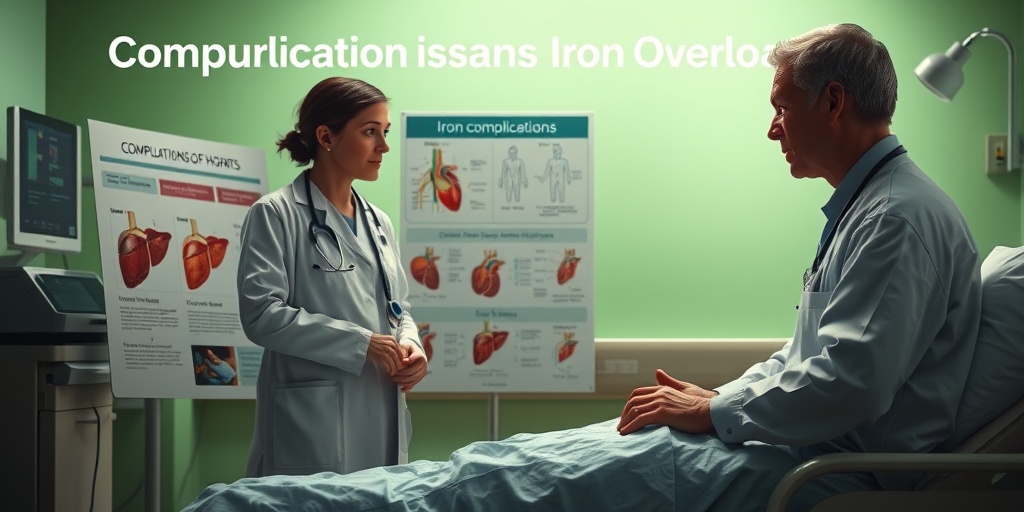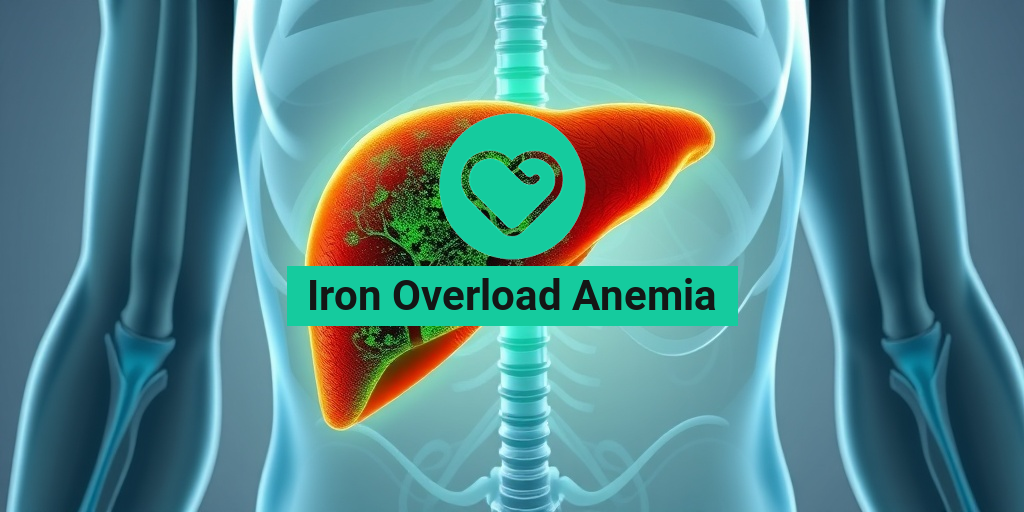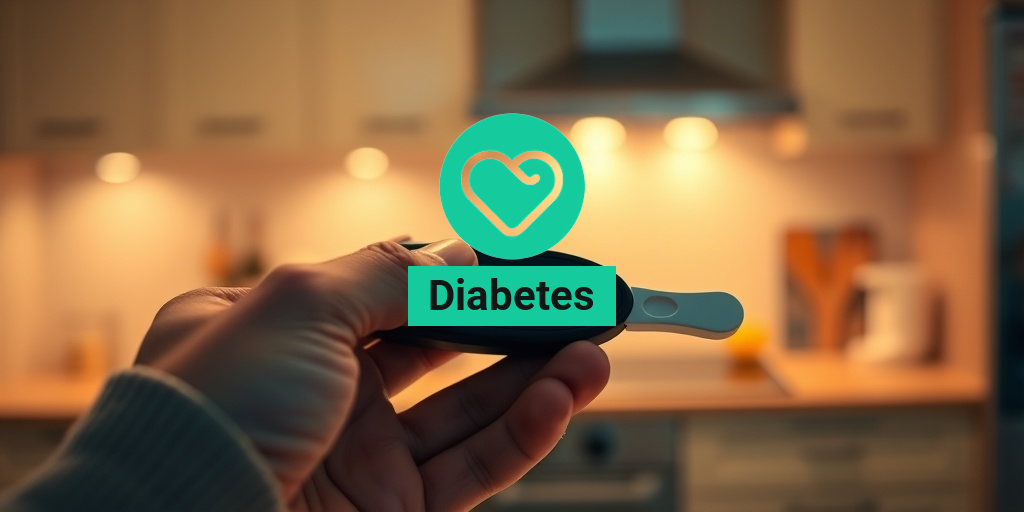What Is Iron Overload Anemia?
Iron overload anemia, also known as iron toxicity anemia, is a condition characterized by an excess of iron in the body, leading to various health complications. Unlike typical anemia, which is often caused by a deficiency of iron, iron overload anemia results from the body absorbing too much iron from dietary sources or through repeated blood transfusions. This excess iron can accumulate in organs, causing damage and impairing their function.
Understanding Iron Overload
Iron is an essential mineral that plays a crucial role in several bodily functions, including the formation of hemoglobin, which carries oxygen in the blood. However, when the body has too much iron, it can lead to serious health issues. The condition can arise from genetic disorders, such as hereditary hemochromatosis, or from secondary causes like chronic liver disease or excessive iron supplementation.
How Iron Overload Anemia Develops
Iron overload anemia can develop in several ways:
- Genetic Factors: Some individuals inherit genes that cause their bodies to absorb more iron than necessary.
- Frequent Blood Transfusions: Patients with chronic anemia may require multiple blood transfusions, which can lead to an accumulation of iron over time.
- Excessive Iron Intake: Taking iron supplements without medical supervision can lead to iron overload.
Understanding the underlying causes of iron overload anemia is essential for effective treatment and management.
Iron Overload Symptoms
Recognizing the symptoms of iron overload anemia is crucial for early diagnosis and treatment. The symptoms can vary widely among individuals, but some common signs include:
Common Symptoms
- Fatigue: One of the most prevalent symptoms, fatigue can result from the body’s inability to utilize oxygen effectively due to iron overload.
- Joint Pain: Excess iron can deposit in joints, leading to discomfort and pain.
- Abdominal Pain: Individuals may experience pain in the abdomen due to iron accumulation in the liver or other organs.
- Skin Changes: A bronze or gray discoloration of the skin can occur, often referred to as “bronze diabetes.”
- Heart Problems: In severe cases, iron overload can lead to heart complications, including arrhythmias or heart failure.
Less Common Symptoms
In addition to the common symptoms, some individuals may experience:
- Diabetes: Iron overload can affect insulin production, leading to diabetes.
- Hormonal Imbalances: Excess iron can disrupt hormone production, affecting sexual function and fertility.
- Organ Damage: Long-term iron overload can lead to serious damage to the liver, heart, and pancreas.
If you notice any of these symptoms, it is essential to consult a healthcare professional for proper evaluation and diagnosis. Early detection can significantly improve outcomes and prevent complications associated with iron overload anemia.
When to Seek Help
If you suspect you may have iron overload anemia or are experiencing any of the symptoms mentioned, it’s important to seek medical advice. A healthcare provider can perform blood tests to measure iron levels and assess your overall health. They may recommend treatments such as phlebotomy (removing blood) or chelation therapy to help manage iron levels in the body.
For more information on iron overload anemia and its management, consider visiting Yesil Health AI, a valuable resource for evidence-based health answers. 🌟
In conclusion, understanding iron overload anemia is vital for maintaining good health. By recognizing the symptoms and seeking timely medical intervention, individuals can effectively manage this condition and prevent serious complications. Remember, your health is your wealth! 💪

Causes of Iron Overload
Iron overload anemia, also known as iron toxicity anemia, occurs when the body accumulates excess iron, leading to various health complications. Understanding the causes of this condition is crucial for effective management and prevention. Here are some of the primary causes:
1. Genetic Disorders
One of the most common causes of iron overload is hereditary hemochromatosis, a genetic disorder that causes the body to absorb too much iron from food. This condition can lead to significant iron accumulation in organs, resulting in damage over time. Individuals with a family history of this disorder are at a higher risk.
2. Frequent Blood Transfusions
Patients requiring frequent blood transfusions, such as those with thalassemia or sickle cell disease, may experience iron overload. Each unit of transfused blood contains iron, and repeated transfusions can lead to an excess of iron in the body, as the body has no natural mechanism to excrete it.
3. Excessive Iron Intake
While iron is essential for health, excessive intake through diet or supplements can lead to iron overload. This is particularly concerning for individuals who take iron supplements without medical supervision. Foods rich in iron, such as red meat and fortified cereals, can contribute to high iron levels if consumed in excess.
4. Liver Disease
Chronic liver diseases, such as hepatitis or cirrhosis, can impair the liver’s ability to regulate iron levels. The liver plays a crucial role in iron metabolism, and any dysfunction can lead to increased iron absorption and storage, resulting in iron overload anemia.
5. Other Medical Conditions
Conditions like iron overload hemolytic anemia and sideroblastic anemia can also lead to excess iron in the body. In hemolytic anemia, the destruction of red blood cells releases iron into the bloodstream, while in sideroblastic anemia, the body fails to incorporate iron into hemoglobin, leading to iron accumulation.
Risk Factors for Iron Overload
Identifying the risk factors for iron overload is essential for early detection and intervention. Here are some key risk factors to consider:
1. Family History
A family history of iron overload disorders significantly increases the risk of developing iron overload anemia. If you have relatives with hereditary hemochromatosis or other related conditions, it’s important to discuss this with your healthcare provider.
2. Age and Gender
Men are generally at a higher risk for iron overload than women, primarily due to menstruation, which helps women excrete excess iron. Additionally, individuals over the age of 40 are more likely to experience iron overload due to cumulative dietary intake and potential underlying health issues.
3. Ethnicity
Certain ethnic groups, particularly those of Northern European descent, are more prone to hereditary hemochromatosis. Understanding your ethnic background can help assess your risk for iron overload anemia.
4. Chronic Conditions
Individuals with chronic conditions such as liver disease, diabetes, or heart disease may have an increased risk of iron overload. These conditions can affect the body’s ability to manage iron levels effectively.
5. Lifestyle Factors
Dietary habits play a significant role in iron levels. A diet high in red meat and iron-fortified foods, combined with low consumption of foods that inhibit iron absorption (like dairy and certain grains), can contribute to iron overload. Additionally, alcohol consumption can exacerbate liver damage and increase iron absorption.
Being aware of these causes and risk factors can empower individuals to take proactive steps in managing their iron levels and overall health. Regular check-ups and blood tests can help monitor iron levels and prevent complications associated with iron overload anemia. 🩸

Diagnosis of Iron Overload Anemia
Diagnosing Iron Overload Anemia can be a complex process, as it often mimics other types of anemia and health conditions. However, with the right tests and evaluations, healthcare providers can accurately identify this condition. Here’s a closer look at the diagnostic process.
Initial Assessment
The journey to diagnosis typically begins with a thorough medical history and physical examination. Your doctor will ask about:
- Your symptoms, such as fatigue, weakness, or joint pain.
- Family history of anemia or iron overload disorders.
- Your dietary habits and any supplements you may be taking.
Blood Tests
Blood tests are crucial in diagnosing iron overload anemia. The following tests are commonly performed:
- Serum Ferritin: This test measures the amount of stored iron in your body. Elevated levels can indicate iron overload.
- Serum Iron: This measures the amount of circulating iron in your blood.
- Total Iron-Binding Capacity (TIBC): This test assesses how well your blood can transport iron. Low TIBC levels may suggest iron overload.
- Transferrin Saturation: This percentage indicates how much iron is bound to transferrin, a protein that transports iron. High levels can be a sign of excess iron.
Genetic Testing
In some cases, genetic testing may be recommended to identify hereditary conditions like hereditary hemochromatosis, which can lead to iron overload. This is particularly important if there is a family history of iron-related disorders.
Imaging Studies
To assess the extent of iron accumulation in organs, imaging studies such as MRI may be utilized. These tests can help visualize iron deposits in the liver, heart, and pancreas, providing a clearer picture of the condition’s severity.
Complications of Iron Overload
If left untreated, iron overload anemia can lead to serious health complications. Understanding these risks is essential for effective management and prevention.
Organ Damage
Excess iron can accumulate in various organs, leading to damage and dysfunction. Key areas affected include:
- Liver: Iron overload can cause liver cirrhosis, fibrosis, or even liver cancer.
- Heart: Iron deposits in the heart can lead to cardiomyopathy, arrhythmias, and heart failure.
- Pancreas: Damage to the pancreas can result in diabetes, often referred to as “bronze diabetes” due to skin discoloration.
Hormonal Imbalances
Iron overload can disrupt hormonal balance, affecting the endocrine system. This can lead to conditions such as:
- Hypogonadism: Reduced testosterone levels in men, leading to infertility and decreased libido.
- Thyroid Dysfunction: Iron overload may impair thyroid function, resulting in hypothyroidism.
Increased Risk of Infections
Excess iron can also compromise your immune system. Iron is a vital nutrient for many pathogens, and high levels can increase susceptibility to infections, particularly bacterial infections.
Joint Problems
Individuals with iron overload anemia may experience joint pain and arthritis-like symptoms due to iron deposits in the joints. This can lead to chronic discomfort and mobility issues.
Recognizing the symptoms and complications associated with iron overload is crucial for timely intervention. If you suspect you may have iron overload anemia, consult with a healthcare professional for appropriate testing and management strategies. 🩺

Treatment Options for Iron Overload Anemia
Iron overload anemia, also known as iron toxicity anemia, occurs when the body accumulates excess iron, leading to various health complications. Understanding the treatment options available is crucial for managing this condition effectively. Here, we will explore several treatment strategies that can help mitigate the effects of iron overload.
1. Phlebotomy
One of the most common treatments for iron overload anemia is phlebotomy, a procedure that involves the removal of blood from the body. This method helps to reduce iron levels by decreasing the overall amount of iron in the bloodstream. Typically, patients may undergo phlebotomy sessions every few weeks, depending on their iron levels and overall health.
2. Chelation Therapy
For individuals who cannot undergo phlebotomy, chelation therapy is an alternative treatment. This involves administering medications that bind to excess iron in the body, allowing it to be excreted through urine or feces. Common chelating agents include:
- Deferoxamine (Desferal)
- Deferasirox (Exjade)
- Deferiprone (Ferriprox)
These medications can be effective in managing iron overload, especially in patients with conditions like thalassemia or sickle cell disease, where iron overload is a common complication.
3. Dietary Modifications
Making dietary changes can also play a significant role in managing iron overload anemia. Patients are often advised to limit their intake of iron-rich foods, particularly heme iron found in red meat and certain seafood. Instead, focusing on a diet rich in:
- Fruits and vegetables
- Whole grains
- Legumes
can help maintain overall health while reducing iron absorption. Additionally, avoiding vitamin C supplements, which enhance iron absorption, can be beneficial.
4. Monitoring and Regular Check-ups
Regular monitoring of iron levels through blood tests is essential for anyone diagnosed with iron overload anemia. This allows healthcare providers to adjust treatment plans as necessary and ensure that iron levels remain within a safe range. Keeping track of symptoms and any changes in health can also aid in timely interventions.
Preventing Iron Overload Anemia
Prevention is always better than cure, especially when it comes to conditions like iron overload anemia. Here are some effective strategies to help prevent this condition:
1. Genetic Screening
For individuals with a family history of iron overload disorders, such as hereditary hemochromatosis, genetic screening can be beneficial. Early detection of genetic predispositions allows for proactive management and lifestyle adjustments to prevent iron accumulation.
2. Balanced Iron Intake
Maintaining a balanced diet is crucial. While iron is an essential nutrient, excessive intake can lead to overload. It’s important to consume iron in moderation, particularly for those at risk. Consulting with a healthcare provider or a nutritionist can help tailor dietary needs based on individual health profiles.
3. Avoiding Iron Supplements
Unless prescribed by a healthcare professional, it’s advisable to avoid iron supplements. Many people mistakenly believe that more iron is always better, but for those at risk of iron overload, this can exacerbate the problem. Always consult with a doctor before starting any new supplements.
4. Regular Health Check-ups
Routine health check-ups can help identify any early signs of iron overload. Blood tests that measure ferritin and transferrin saturation can provide valuable insights into iron levels. Early detection allows for timely intervention and management, reducing the risk of developing iron overload anemia.
By understanding the treatment options and preventive measures for iron overload anemia, individuals can take proactive steps to manage their health effectively. Remember, knowledge is power when it comes to maintaining optimal health! 💪

Frequently Asked Questions about Iron Overload Anemia
What is Iron Overload Anemia?
Iron Overload Anemia is a condition characterized by an excess of iron in the body, which can lead to various health issues, including anemia. This occurs when the body absorbs too much iron from food or supplements, resulting in iron toxicity and impaired red blood cell production.
What are the symptoms of Iron Overload Anemia?
Common symptoms of iron overload anemia include:
- Fatigue and weakness
- Joint pain
- Abdominal pain
- Skin discoloration (bronze or gray)
- Heart problems
How is Iron Overload Anemia diagnosed?
Diagnosis typically involves blood tests to measure iron levels, including:
- Serum ferritin
- Transferrin saturation
- Complete blood count (CBC)
Additional tests may be required to assess organ function and iron accumulation.
What are the treatment options for Iron Overload Anemia?
Treatment for iron overload anemia may include:
- Phlebotomy (regular blood removal)
- Iron chelation therapy (medications that bind excess iron)
- Dietary changes to limit iron intake
Consulting a healthcare provider is essential for a tailored treatment plan.
Can Iron Overload Anemia be prevented?
While it may not be entirely preventable, iron overload anemia can be managed by:
- Avoiding excessive iron supplements
- Monitoring iron levels if you have conditions that increase iron absorption
- Regular check-ups with a healthcare provider
What are the complications of untreated Iron Overload Anemia?
If left untreated, iron overload anemia can lead to serious complications, including:
- Liver damage or cirrhosis
- Heart disease
- Diabetes
- Hormonal imbalances
Is Iron Overload Anemia hereditary?
Yes, certain forms of iron overload anemia, such as hereditary hemochromatosis, are genetic. Individuals with a family history of iron overload should be monitored for symptoms and iron levels.
When should I see a doctor?
If you experience symptoms of iron overload anemia or have concerns about your iron levels, it is important to consult a healthcare professional for evaluation and guidance. Early detection and management can prevent complications. 🩺




